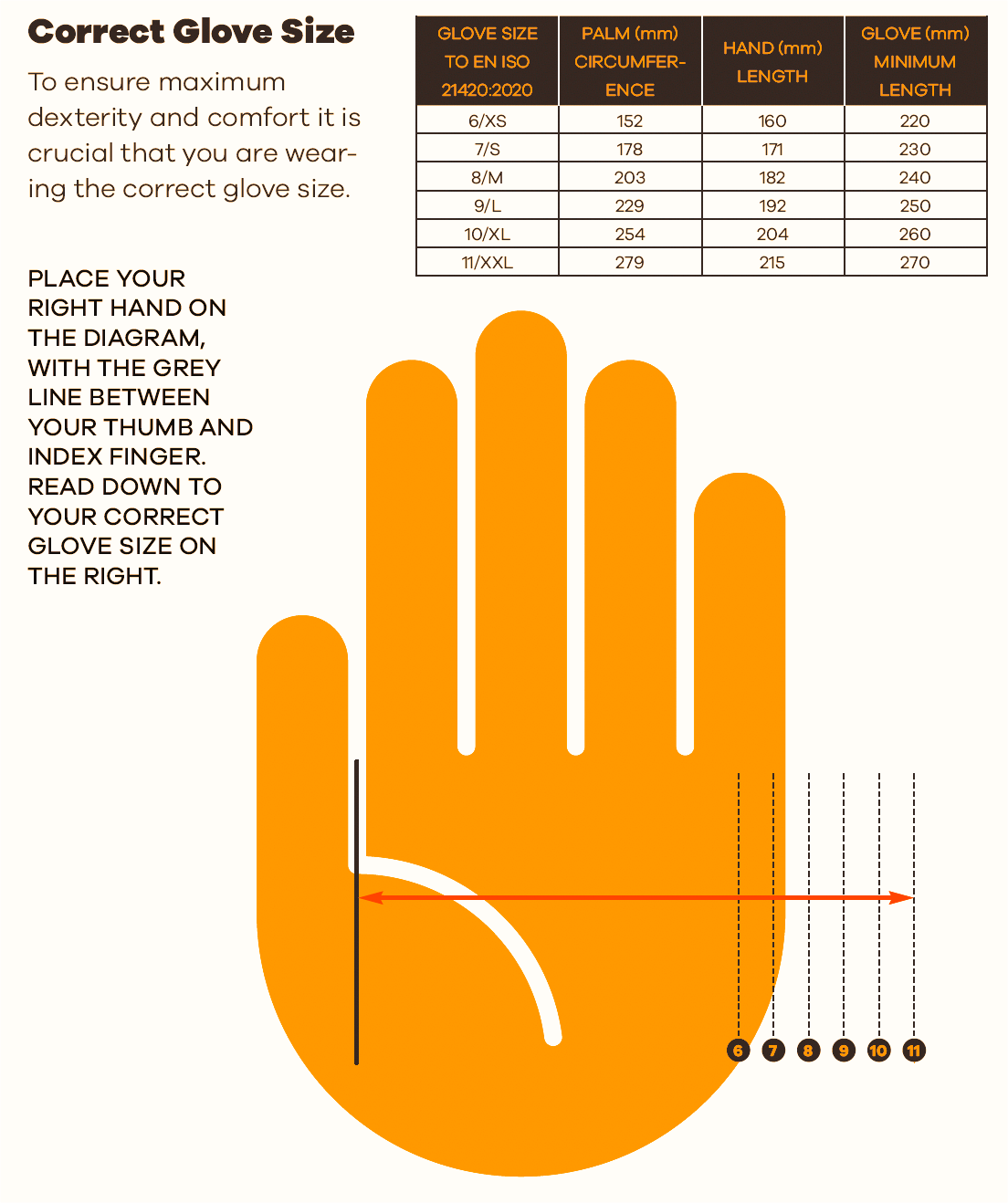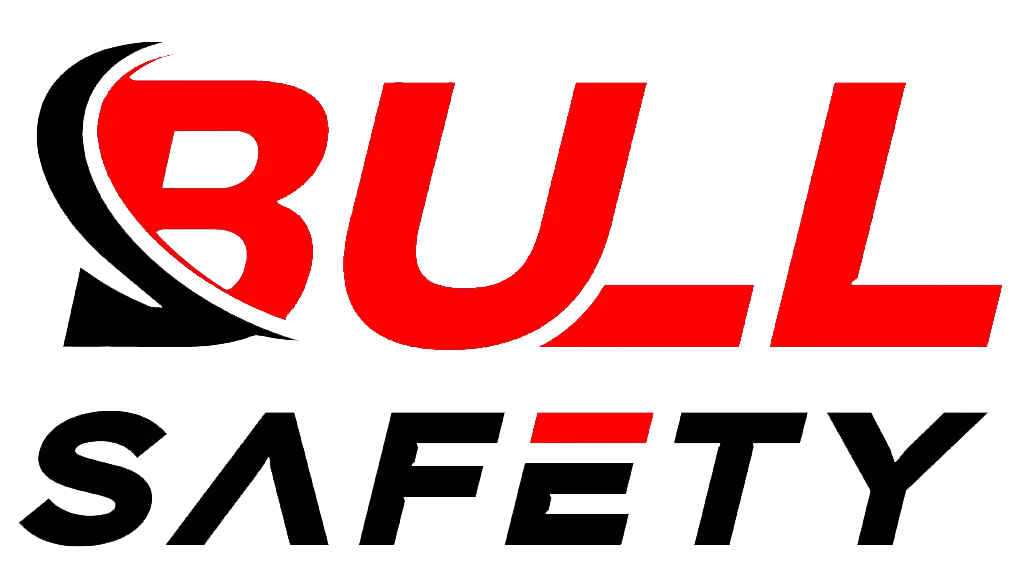
I know that choosing the right glove size is essential for my safety, comfort, and efficiency at work. A properly fitted glove offers better protection, enhances my grip, and reduces fatigue. When gloves do not fit well, I risk discomfort and potential accidents.
To measure my glove size accurately, I measure the circumference and length of my hand and use a standardized size chart to find my perfect fit.
In this guide, I will show you how I measure my hand, determine my glove size, and decide whether gloves should be tight or loose.
What Size Work Gloves Do I Need?
I choose the correct glove size by measuring my hand and matching it to a size chart. Gloves that are too tight or too loose can hinder my movement and affect my productivity.
To find the right work glove size, measure the circumference of your dominant hand around the widest part (excluding the thumb). Then, compare it to a standardized glove size chart for an accurate fit. A properly fitted glove enhances grip, reduces fatigue, and improves safety. If you’re buying from European or American brands, check if the sizing follows EN 420 or ANSI standards, as variations exist..
How Do I Measure My Hand for Gloves?
Measure my glove size by using a flexible tape measure. Wrap it around the widest part of my palm (excluding the thumb) for hand circumference. Then, measure from the tip of your middle finger to the base of my palm for hand length. Match these measurements with a glove size chart to ensure a secure and comfortable fit. If in between sizes, choose a snug fit for dexterity or a looser fit for comfort.
Steps I Follow to Measure My Glove Size
-
I Measure the Circumference
- I use a flexible tape measure.
- I wrap it around the widest part of my dominant hand, just below the knuckles (excluding my thumb).
- I record the measurement in inches or centimeters.
-
I Measure the Length
- I measure from the tip of my middle finger to the base of my palm.
- I note the measurement in inches or centimeters.
-
I Match My Measurements to a Size Chart
| Glove Size | Numerical Size | Hand Circumference (Inches) | Hand Length (Inches) | My Use |
|---|---|---|---|---|
| Extra Small (XS) | 6 | 6 – 7 | 6 – 6.5 | For precision tasks, small hands |
| Small (S) | 7 | 7 – 8 | 6.5 – 7 | For light assembly, general use |
| Medium (M) | 8 | 8 – 9 | 7 – 7.5 | For general handling tasks |
| Large (L) | 9 | 9 – 10 | 7.5 – 8.5 | For construction or manufacturing |
| Extra Large (XL) | 10 | 10 – 11 | 8.5 – 9.5 | For heavy-duty industrial work |
| 2XL | 11 | 11 – 12 | 9.5 – 10 | For larger hands, extreme tasks |
| 3XL | 12 | 12 – 13 | 10 – 10.5 | For specialized oversized needs |
Should My Work Gloves Be Tight or Loose?
Work gloves should fit snugly for better control and grip, but without restricting blood flow. A tight fit is ideal for precision tasks (e.g., assembly work), while a looser fit suits heavy-duty tasks where breathability and flexibility matter. For winter gloves, choose a slightly larger size to accommodate liners. If handling oily surfaces, snug gloves offer better grip.
Pros and Cons of Different Fits
| Fit Type | Advantages (My Experience) | Disadvantages (My Experience) |
|---|---|---|
| Tight Fit | I get improved precision and dexterity. | They may restrict blood flow and feel less breathable. |
| Loose Fit | They offer better comfort and breathability. | My grip may suffer, and there’s a higher risk of snagging. |
How I Choose the Right Fit
- For Precision Work:
- I choose a snug fit for tasks like assembly or fine handling.
- For Heavy-Duty Tasks:
- I prefer a slightly looser fit for handling tools and machinery.
- For Cold Weather:
- I select gloves with extra room for liners or insulation.
How I Test the Fit
- Grip Test: I check if I can hold my tools securely.
- Flexibility Test: I bend my fingers to ensure there is no restriction.
- Extended Wear: I wear the gloves for a while to confirm comfort.
What Does Glove Size 10 Mean?
Glove size 10 refers to a 10-inch hand circumference and is typically classified as Extra Large (XL). However, sizing varies by brand and region—a size 10 in European standards may differ from ANSI sizing. When buying leather gloves, size 10 may feel tighter due to material shrinkage, while synthetic gloves may have more stretch. Always check the manufacturer’s size chart for accuracy..
How I Measure for Glove Size 10
-
I Measure My Hand Circumference:
- I wrap a tape measure around the widest part of my dominant hand, below the knuckles (excluding the thumb).
- If it measures 10 inches, I know that size 10 is likely my fit.
-
I Measure My Hand Length:
- I measure from the tip of my middle finger to the base of my palm.
- Typically, size 10 gloves fit hands with a length of 8.5 to 9.5 inches.
A Quick Comparison of Glove Sizes
| Numerical Size | Circumference (Inches) | Length (Inches) | Equivalent Letter Size |
|---|---|---|---|
| 7 | 7 | 6.5 | Small (S) |
| 8 | 8 | 7 | Medium (M) |
| 9 | 9 | 7.5 | Large (L) |
| 10 | 10 | 8.5 | Extra Large (XL) |
| 11 | 11 | 9.5 | 2XL |
What’s the Average Glove Size for a Man?
The average men’s glove size is Large (L), with a hand circumference of 9 inches and length between 7.5–8.5 inches. However, sizing differs globally—North American gloves tend to be roomier, while Asian glove sizes run smaller. Check regional sizing standards (EN 420, ANSI) when sourcing gloves internationally.
How I Measure Hand Size for Men
-
I Measure the Circumference:
- I wrap my tape measure around the widest part of the palm, excluding the thumb.
- Most men, including myself, measure between 8.5 and 10 inches.
-
I Measure the Length:
- I measure from the tip of my middle finger to the base of my palm.
- I have found that average hand lengths range from 7.5 to 8.5 inches.
What Do the Numbers on Work Gloves Mean?
I use the numbers on my gloves to quickly check the size, safety ratings, and certification standards.
For instance, I know that size 10 means a 10-inch hand circumference. An EN388 rating like 4X42 tells me the glove’s durability, while an ANSI A5 rating shows high cut resistance.
How I Decode Glove Numbers
-
Size Numbers:
- Sizes like 7, 8, 9, or 10 correspond to hand circumference in inches.
- For example, a size 10 glove fits a 10-inch hand.
-
EN388 Safety Ratings:
- These ratings measure abrasion, cut, tear, and puncture resistance.
- An EN388 rating (such as 4X42) provides information on durability.
-
ANSI Cut Resistance Levels:
- ANSI levels range from A1 to A9, indicating different levels of cut protection.
Conclusion
Measuring my glove size is simple when I know what the numbers mean. I always start by measuring my hand circumference and length. Then I check the safety ratings to match the glove to the job. This method ensures that every pair of gloves I offer gives the best protection and comfort.
If you want to learn more about how I choose the right work gloves, feel free to contact me.



